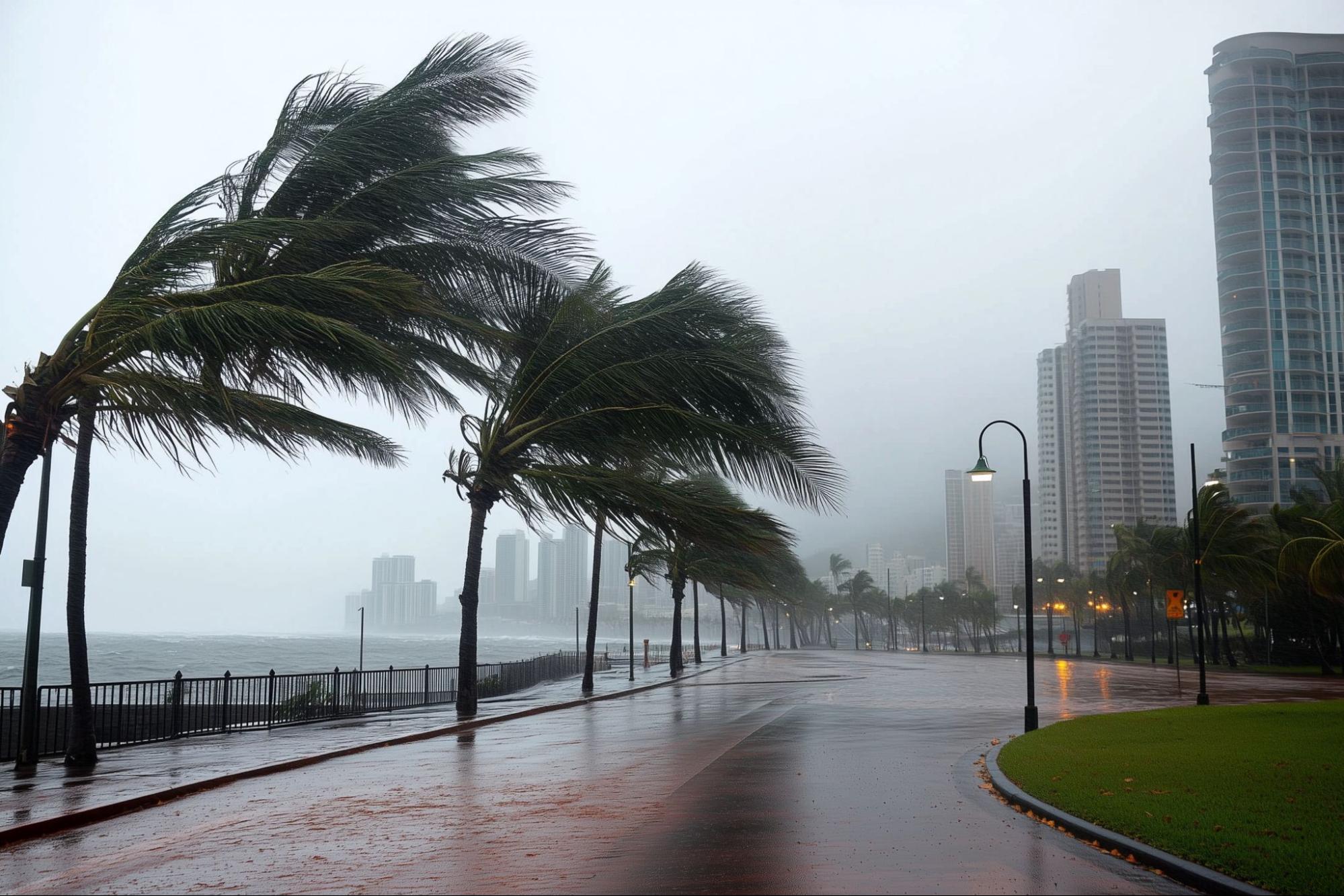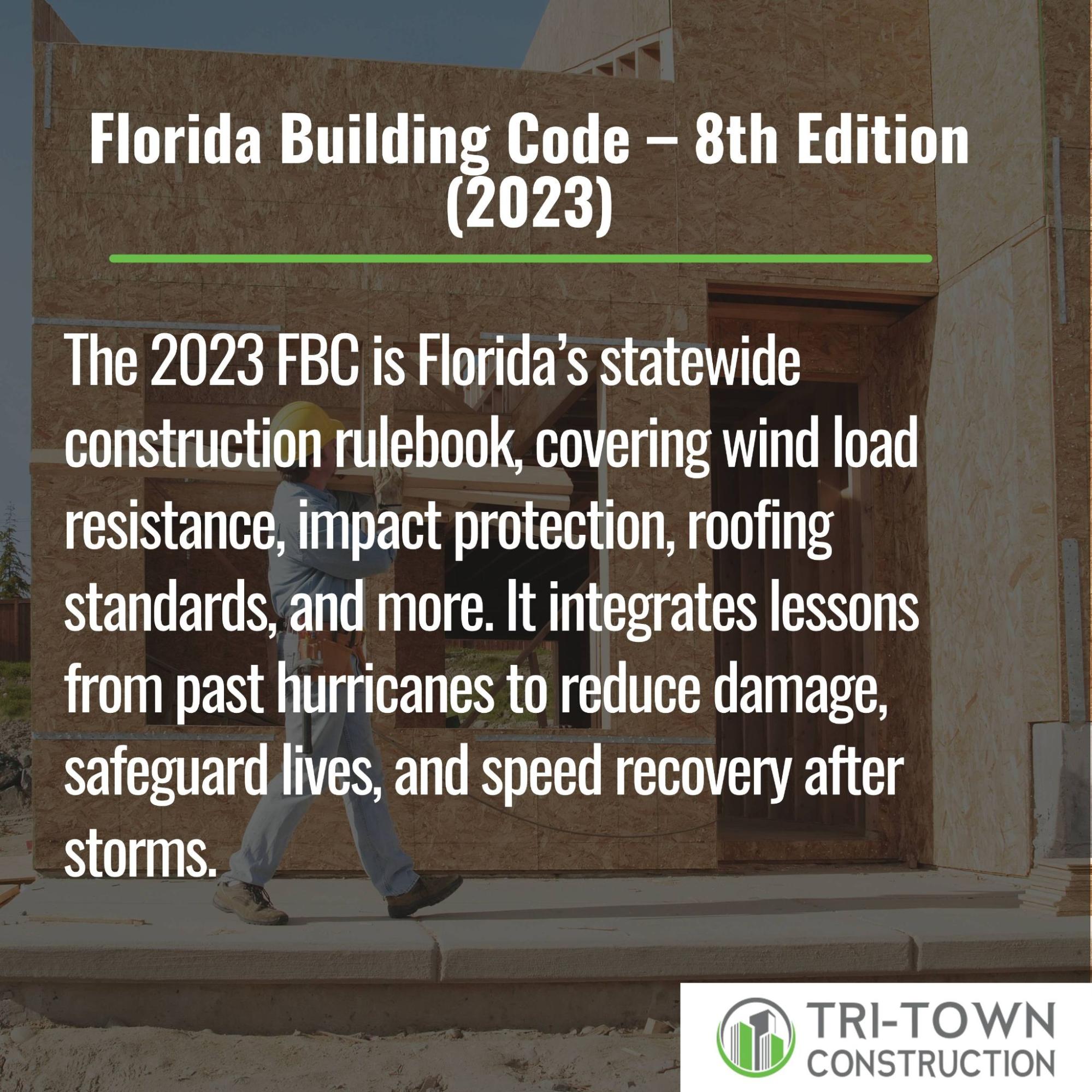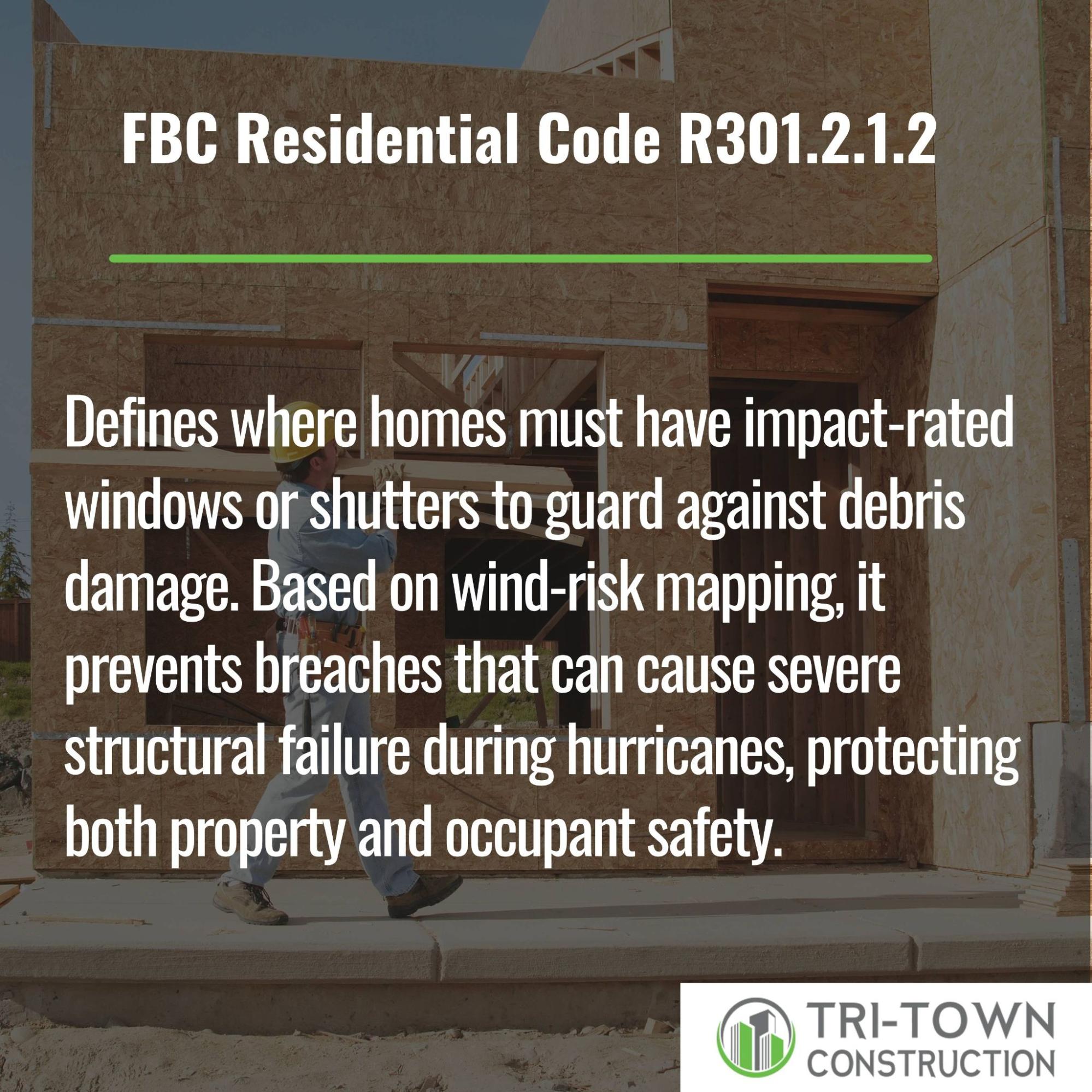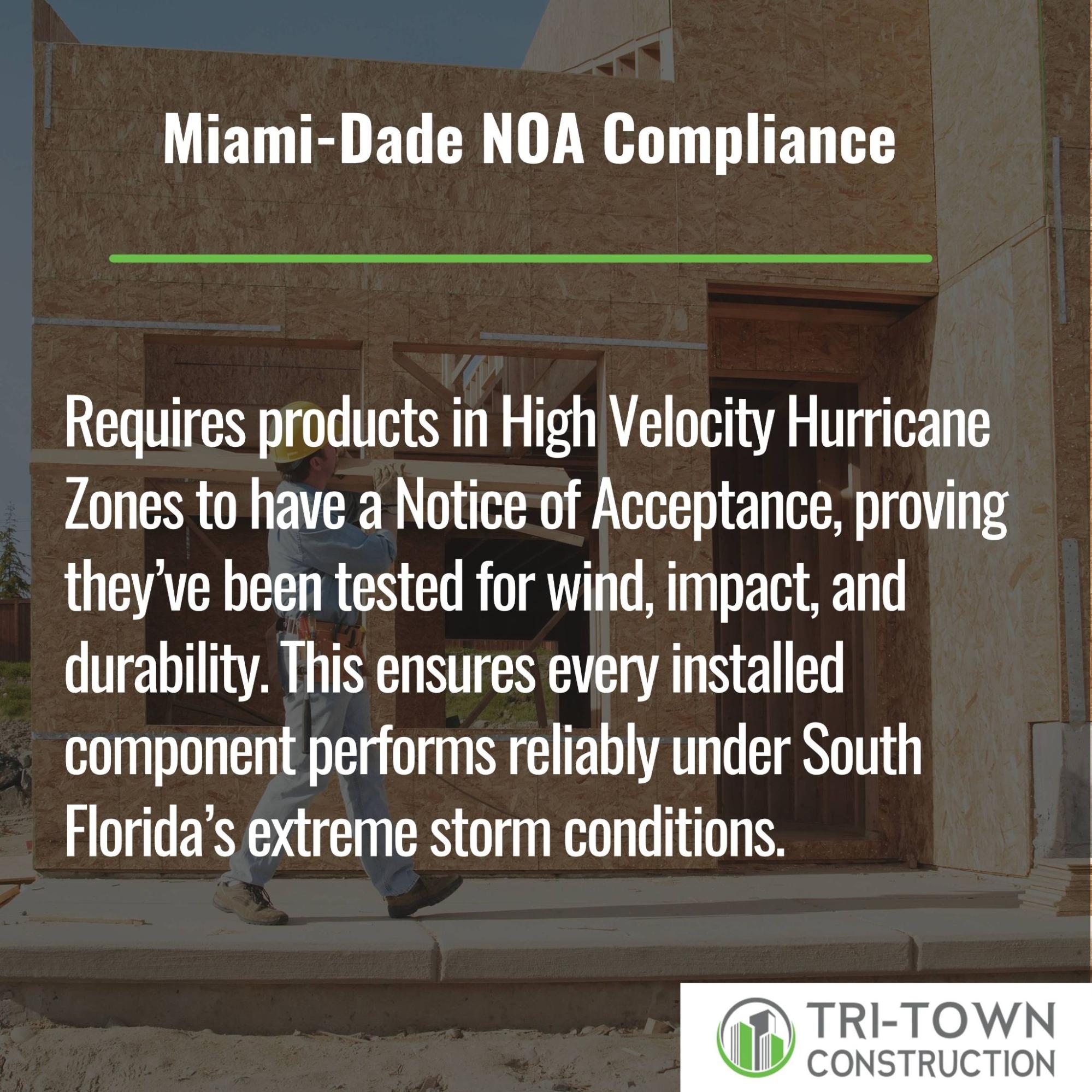Florida Hurricane Building Codes Explained
Florida hurricane building codes require homes to meet strict statewide standards for wind resistance, impact protection, flood elevation, and structural integrity, with enhanced rules in high-risk zones like Miami-Dade and Broward to withstand severe storm conditions.
Florida Hurricane Building Codes: What You Need to Know
Florida’s building codes are among the toughest in the U.S., designed to protect lives and property in one of the world’s most hurricane-prone regions. The statewide Florida Building Code (FBC) sets requirements for:
- Wind load resistance for walls, roofs, and structural connections.
- Impact-rated openings or shutters in wind-borne debris zones.
- HVHZ product testing in Miami-Dade and Broward.
- Flood-resistant foundations in FEMA-mapped areas.
- Roof covering standards with ASTM/TAS testing.
- Mandatory safety inspections and insurance-related updates.
Skipping these rules risks denied insurance, expensive repairs, legal trouble, and lower home value.
Building beyond code boosts safety, lowers costs, and speeds recovery, and ahead, you’ll see exactly how to make your home truly storm-ready.
The Weather That Shaped Florida’s Hurricane Building Rules

Hurricane season is part of life in Florida, but the damage these storms can cause is anything but routine.
Understanding the state’s storm history helps explain why its building codes are among the toughest in the country.
1. A State in the Path of Powerful Storms
Florida’s coastline is stunning, but it sits squarely in the path of powerful Atlantic hurricanes.
Warm ocean waters fuel storms that can arrive with Category 4 or 5 strength, delivering winds over 130 miles per hour, torrential rain, and storm surges capable of wiping out entire neighborhoods.
2. Lessons from Past Disasters
From Hurricane Andrew in 1992 to Hurricane Ian in 2022, these storms have caused billions in damage and exposed flaws in construction.
Andrew destroyed over 25,000 homes, revealing weak, inconsistent local codes.
Ian struck near Fort Myers as a Category 4, causing more than $112 billion in losses and triggering fresh reviews of building performance.
3. Why Florida Had to Raise the Bar
Years of destruction made one thing clear: in Florida, building codes cannot be optional.
The state responded with some of the nation’s strictest standards, designed to safeguard lives, reduce property loss, and help communities recover faster after major storms.
This history explains why Florida’s building codes are both rigorous and essential.
Next, we will look closely at these regulations, what they require, and how they apply to anyone planning to build or remodel in the Sunshine State.
Related Resource → Coastal Building Zone Florida: Rules, Permits & Guide
Florida’s Most Critical Hurricane Building Codes and Standards
Florida’s building codes are not just guidelines, they are a tested blueprint for surviving extreme weather.
These codes apply statewide, with certain areas like Miami-Dade and Broward enforcing even stricter rules.
1. Statewide Hurricane Safety Framework: Florida Building Code – 8th Edition (2023)

The current FBC, in effect since 2023, is the state’s master rulebook for construction.
It covers everything from how much wind pressure a wall must withstand to the testing standards for roof coverings and impact-resistant products.
The 8th Edition integrates the latest engineering research and lessons from hurricanes like Ian, aiming to reduce damage, protect lives, and minimize costly post-storm repairs.
2. FBC Residential Code R301.2.1.2: Mapping High-Risk Wind-Borne Debris Regions

This section maps out where homes must have additional protection from flying debris, such as impact-rated windows or approved shutters.
It is based on the likelihood of hurricane-strength winds in a given area.
In these designated zones, even small breaches can cause catastrophic internal damage, so the rule ensures openings are shielded against the kind of impacts common in severe storms.
3. FBC Sections 1620–1626: Engineering for Wind Resistance
These provisions set the structural backbone for resisting hurricane-force winds.
They cover everything from how loads travel through a building to the anchoring of walls, roofs, and foundations.
By requiring continuous load paths and specifying material strengths, these sections help prevent the kind of progressive structural failures seen in older, pre-2002 homes during storms like Hurricane Michael.
4. Miami-Dade NOA Compliance: Product Testing in High Velocity Hurricane Zones (HVHZ)

In the High Velocity Hurricane Zone, which includes Miami-Dade and Broward counties, products must have a Notice of Acceptance (NOA).
This means they have been lab-tested for wind pressure, impact resistance, and installation durability.
NOA compliance applies to windows, doors, roofing materials, and more, ensuring every critical component can withstand the extreme conditions unique to South Florida.
5. Florida Statute 553.73: Unifying the State’s Building Rules
This statute formally establishes the Florida Building Code as the single statewide standard, replacing the patchwork of local codes that existed before 2002.
It ensures uniformity, so a home built in Naples follows the same baseline safety standards as one in Jacksonville.
Consistency is key for both enforcement and for ensuring all Florida residents get the same level of hurricane protection.
6. FBC Chapter 15 and ASTM/TAS Standards: Reinforcing Roof Systems
Roof failures are one of the leading causes of interior damage during hurricanes.
Florida’s roofing rules reference FBC Chapter 15 and national standards like ASTM D3161/D7158 for shingle wind ratings.
In HVHZ regions, materials must pass TAS 201, 202, and 203 tests, which simulate debris impacts and wind uplift.
These standards ensure that roof coverings remain intact even when exposed to high winds and flying debris.
7. FBC R301.2.1.2.2: Securing Doors and Windows from Windborne Debris

This rule requires that all windows and exterior doors in certain high-risk areas be protected by approved systems, such as impact-resistant glass or shutter assemblies.
The aim is to prevent pressure changes inside a building during a hurricane, which can cause roofs and walls to blow out.
The regulation also outlines testing and installation requirements to verify real-world performance.
8. FBC R322: Building for Flood Survival with Elevated Foundations
In flood-prone zones, homes must be elevated and built to resist water damage.
This section addresses minimum elevation heights, foundation types, and anchoring methods to keep structures secure during storm surge or flooding.
By incorporating FEMA flood maps, it ensures that homes are designed for both wind and water hazards, not just one or the other.
9. HB 837 and SB 4-D: Recent Legal Changes Shaping Building Safety
Recent laws, like HB 837, reform how insurance companies handle hurricane damage claims, which can affect homeowners after a storm.
SB 4-D adds mandatory safety inspections for certain multi-family buildings, focusing on structural integrity.
10. Florida Building Code 50% Rule

If repairs or improvements in a FEMA flood zone equal or exceed 50% of a home’s structure-only value (excluding land), the entire building must meet current building and floodplain requirements.
This often means elevating the home or completing full-code upgrades.
Related Resource → Florida’s 50% Rule Explained: What Homeowners Need to Know
These updates reflect Florida’s evolving approach to resilience, addressing both how buildings are constructed and how they are maintained over time.
These provisions together create a comprehensive safety net for Florida’s built environment.
Next, we will explore the steep costs,financial and otherwise,of cutting corners or ignoring these rules.
The Price of Ignoring the Codes
Florida’s building codes exist for a reason. Ignoring them can turn a summer storm into a life changing loss. The costs show up long after the wind stops, on insurance forms, repair bills, and closing tables.
- Denied insurance: Non compliant construction can void or reduce claims, leaving owners to fund repairs.
- Expensive Repairs: Weak connections or non rated openings fail under uplift and debris, driving tear outs.
- Legal Trouble: Violations can bring stop work orders, fines, and liability for injuries or spread damage.
- Lower Resale Value: Missing permits or compliance records slow transactions and pull down offers.
- Hidden Safety Risks: After Ian, poorly fastened decks and non rated windows saw disproportionate failures.
Every dollar saved by skipping requirements reappears as multiplied losses after a major storm. The smarter move is to meet code, then go a step beyond, which is where true resilience begins.
Helpful Resource → ICF Home Lifespan: Why These Homes Last So Long
Why Code Compliance Isn’t Just About Passing Inspection
View this post on Instagram
Florida’s code is a baseline, not a guarantee. Building a little stronger and a little smarter converts lab specs into real world performance, and it often pays for itself with fewer surprises for your budget and clean inspection reports.
- Stronger Structures: ICF walls, reinforced roof to wall ties, and clean load paths resist extreme gusts.
- Insurance Savings: Impact protection, secondary water barriers, and tie downs can qualify for credits.
- Faster Recovery: Homes that stay dry and intact reopen quicker, reducing displacement and rebuild scope.
- Peace of Mind: Upgrades put protection in the structure, not in luck or sandbags.
- Long Term Value: Durable assemblies cut maintenance and signal quality to buyers and appraisers.
Getting there takes a clear process, not guesswork.
Next we outline permits, inspections, and the local rules that make exceeding code possible without delays.
Navigating Permits, Inspections, and Local Amendments Without Losing Your Mind
Permits and inspections are the guardrails that keep projects safe and compliant. Understanding the workflow upfront saves time, budget, and stress.
- Apply Early: Submit sealed plans, wind design, flood elevations, and approvals before work begins.
- Document Products: Match windows, doors, roofing, and hardware to the exact approval numbers.
- Know Local Rules: Counties adopt the FBC, then add requirements..
- Stage Inspections: Expect checks at foundation, framing, mechanicals, roof sheathing, and final, fix before proceeding.
- Keep Records: Store permits, inspection cards, affidavits, and photos for insurance and resale.
With the process mapped, you can choose upgrades that outperform minimums without risking delays.
Building Resilience Is Cheaper Than Rebuilding
View this post on Instagram
In Florida, hurricanes are not a question of “if” but “when.”
Building to code is the bare minimum for safety, yet the real protection comes from exceeding those requirements.
Stronger materials, better engineering, and careful attention to detail can mean the difference between returning home quickly after a storm or facing months of costly repairs.
The strongest homes are built by teams who see these codes as a starting point, not an obstacle. They value quality, longevity, and the safety of the people inside.
At Tri-Town Construction, we combine deep code expertise with storm-tested materials and an unwavering commitment to doing things right the first time.
If you want a home that stands up to Florida’s toughest weather and gives you lasting peace of mind, build it to code and with Tri-Town.


